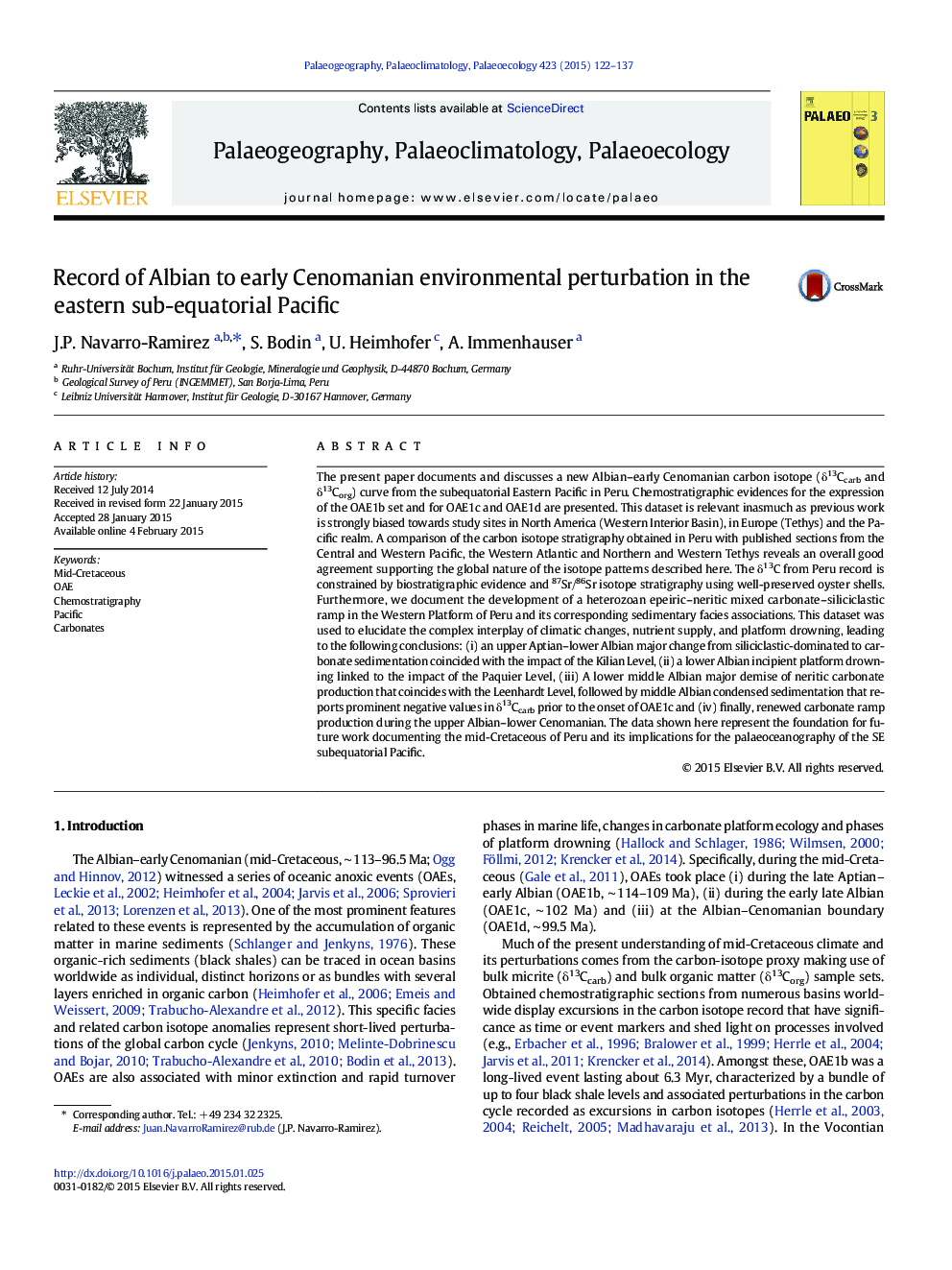| Article ID | Journal | Published Year | Pages | File Type |
|---|---|---|---|---|
| 4466046 | Palaeogeography, Palaeoclimatology, Palaeoecology | 2015 | 16 Pages |
•New Albian-early Cenomanian carbon isotope curves based on epeiric-neritic successions from Peru.•The δ13C curve matches well with other reference sections in the Pacific, the Atlantic and the Tethyan realm.•Evidence for the impact of transient carbon cycle perturbations (OAEs 1b, 1c and 1d) is provided.•The δ13C curve has potential as a new reference curve for the subequatorial eastern Pacific realm.
The present paper documents and discusses a new Albian–early Cenomanian carbon isotope (δ13Ccarb and δ13Corg) curve from the subequatorial Eastern Pacific in Peru. Chemostratigraphic evidences for the expression of the OAE1b set and for OAE1c and OAE1d are presented. This dataset is relevant inasmuch as previous work is strongly biased towards study sites in North America (Western Interior Basin), in Europe (Tethys) and the Pacific realm. A comparison of the carbon isotope stratigraphy obtained in Peru with published sections from the Central and Western Pacific, the Western Atlantic and Northern and Western Tethys reveals an overall good agreement supporting the global nature of the isotope patterns described here. The δ13C from Peru record is constrained by biostratigraphic evidence and 87Sr/86Sr isotope stratigraphy using well-preserved oyster shells. Furthermore, we document the development of a heterozoan epeiric–neritic mixed carbonate–siliciclastic ramp in the Western Platform of Peru and its corresponding sedimentary facies associations. This dataset was used to elucidate the complex interplay of climatic changes, nutrient supply, and platform drowning, leading to the following conclusions: (i) an upper Aptian–lower Albian major change from siliciclastic-dominated to carbonate sedimentation coincided with the impact of the Kilian Level, (ii) a lower Albian incipient platform drowning linked to the impact of the Paquier Level, (iii) A lower middle Albian major demise of neritic carbonate production that coincides with the Leenhardt Level, followed by middle Albian condensed sedimentation that reports prominent negative values in δ13Ccarb prior to the onset of OAE1c and (iv) finally, renewed carbonate ramp production during the upper Albian–lower Cenomanian. The data shown here represent the foundation for future work documenting the mid-Cretaceous of Peru and its implications for the palaeoceanography of the SE subequatorial Pacific.
